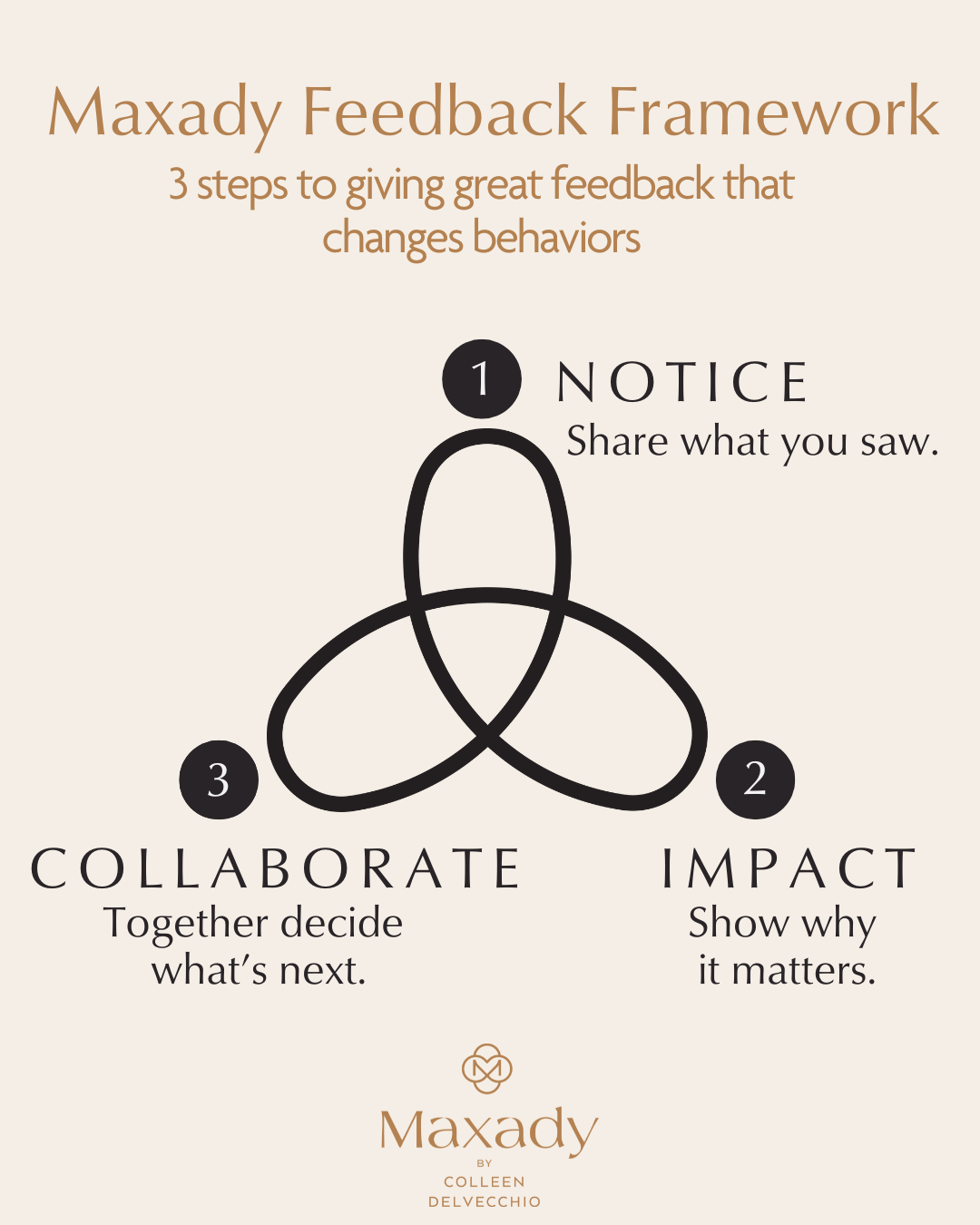From Awkward to Actionable: A Simple Way to Give Better Feedback
We all say we want feedback. But in practice? It’s complicated.
Over just the past week, I’ve seen how differently people give, receive, and respond to feedback.
One leader who went through The Confident Manager emailed to share a huge win: their team hit their annual sales goals by Q3 because of the way they were coached this year. On the flip side, a manager I am coaching told me about an employee who didn’t take feedback well and immediately escalated it to their manager’s boss.
Then I had a great conversation with a friend, sparked by Kyle Van Noy’s newsletter (which you should definitely subscribe to here), where he talks about the importance of watching your own tape as an athlete: "Watch it. Learn. Adjust. Repeat."
And finally, I experienced the power of feedback myself. I received sharp, constructive advice on my pitch for a competition from a master storyteller. I took it, adjusted, and put it into action… and I won the competition!
Here’s the truth: feedback isn’t one-size-fits-all. Some people see it as fuel for growth. Others take it as criticism, even when it’s well-intended. And many leaders struggle with how to deliver it so it’s heard, not resisted.
What I’ve seen over and over in my coaching work is this: the best leaders don’t just give feedback, they normalize it. They make it regular, specific, and tied to growth. Not just something that happens when things go wrong.
And the best employees? They ask for feedback. They welcome it. And they adjust based on it.
Feedback works a lot like sports. Athletes don’t just play the game and move on. They review the film, get coaching, and adjust so they can perform better next time. Managers can do the same with their teams.
The Maxady 3-Step Feedback Framework
3-Step Maxady Feedback Framework
1. Notice → Share what you saw or heard
Stick to facts, not assumptions.
Example: “In today’s meeting, you jumped in before Ana finished her point.”
2. Impact → Explain why it matters
Connect the behavior to outcomes.
Example: “When that happens, the team may feel their ideas aren’t valued.”
3. Collaborate → Together decide what’s next
Ask questions and set a clear path forward.
Example: “How might you make sure quieter voices are heard next time?”
Bonus tip: Keep it short and timely. The best feedback conversations happen quickly after the event and take minutes, not hours.
Imagine if your team treated feedback like athletes reviewing game tape. Not personal, but essential for improvement. Because when feedback becomes a habit instead of a high-stakes event, everyone wins.
I’d love to connect and talk about how to give great feedback or any other leadership topics! You can always find time with me here.

